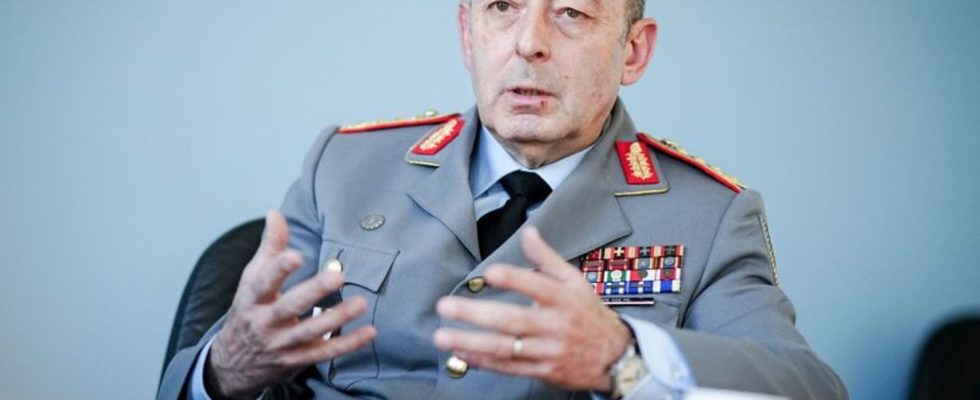armed forces
Large-scale exercise Quadriga: “Step towards war capability”
Inspector General Carsten Breuer: “Germany is the backbone of Europe’s defense.” photo
© Kay Nietfeld/dpa
For the German land forces, Quadriga is the largest maneuver since the Russian attack on Ukraine. 12,000 men and women from the Bundeswehr take part.
A total of more than 12,000 men and women from the Bundeswehr, primarily from the German Army, will be involved in the exercise, the first alert phase of which has already begun. It is the largest exercise by German land forces since the beginning of the Russian war of aggression on Ukraine. The soldiers involved train alerting, deployment to NATO’s external borders in the northeast and southeast, and combat.
Part of the NATO exercise Steadfast Defender
Deterrence – along with the training effect – is a key goal amid increasing warnings that Russia could be ready to test NATO’s alliance spirit in a few years. The German exercise Quadriga is part of the major NATO exercise called Steadfast Defender, for which a total of around 90,000 soldiers are mobilized in the alliance.
Quadriga – this is also the name of the Roman chariot drawn by a team of four – extends over a period of five months. The exercise has four major thrusts, including deployment to Norway (“Grand North”) and the southeast of the alliance (“Grand South”). Several hundred special forces from the Bundeswehr are also involved in “Silver Dagger”.
The focus of the year is on the “Grand Quadriga” exercise in April and May: “The 10th Panzer Division moves soldiers with combat vehicles to Lithuania in various ways and shows their fighting skills in a battle there,” writes the Bundeswehr.
For the German soldiers, two transport routes lead to Lithuania, where an armored brigade of the Bundeswehr will be permanently stationed in the future. Ship transport takes place across the Baltic Sea and on land through the so-called Suwalki Gap, a narrow corridor in the border area between Lithuania and Poland. This corridor lies between Moscow’s ally Belarus and the Russian Baltic Sea enclave of Kaliningrad. The Baltic NATO partners fear that the corridor could be blocked by Russian troops in the event of aggression.
It follows the geography that when the NATO troops are moved from Germany to the Baltics, they encompass the Kaliningrad area as if in a pincer movement. However, the approximately 3,000 soldiers deployed are not a threat. But military training scenarios are also read as messages. In recent years, Russia has had exercises on a completely different scale.
Breuer: “Only what is practiced works in an emergency!”
“For the first time in an exercise we are combining the defense of NATO’s eastern flank with Germany’s role as a linchpin for the defense of Europe,” said Breuer – Germany’s highest-ranking soldier – about the series of exercises. “Relocating troops is core military business. Every move has to be perfect. Only what is practiced works in an emergency!” In the coming years, the Bundeswehr will carry out more and more large-scale exercises with the Allies in Germany.
Just last week, former US General Ben Hodges pointed out significant deficits in the alliance’s ability to quickly deploy large numbers of troops at a Bundeswehr symposium on the new German defense plan. There are not enough trains for military transport, said Hodges, former commander of US forces in Europe. “Today there is capacity to carry one and a half armored brigades, I believe. Total. That’s all,” Hodges said. “And all of our plans require moving eight, nine or ten armored brigades in Europe at the same time.”

